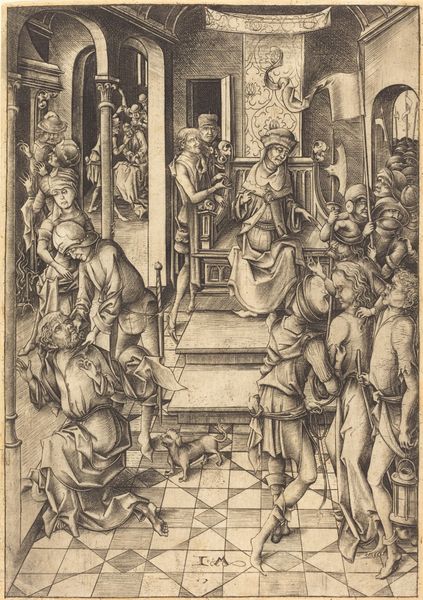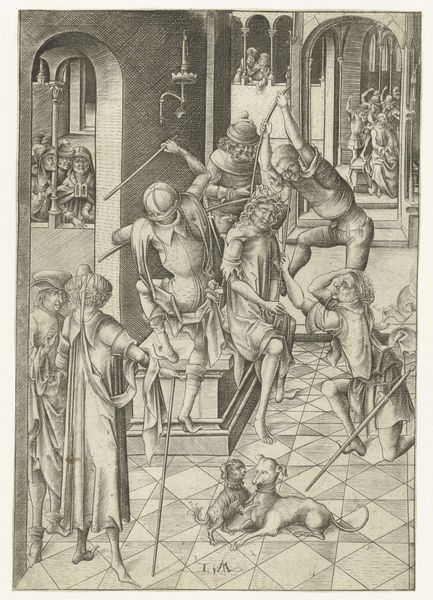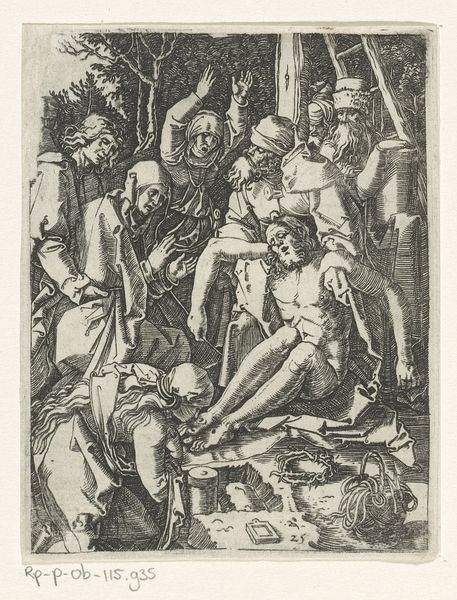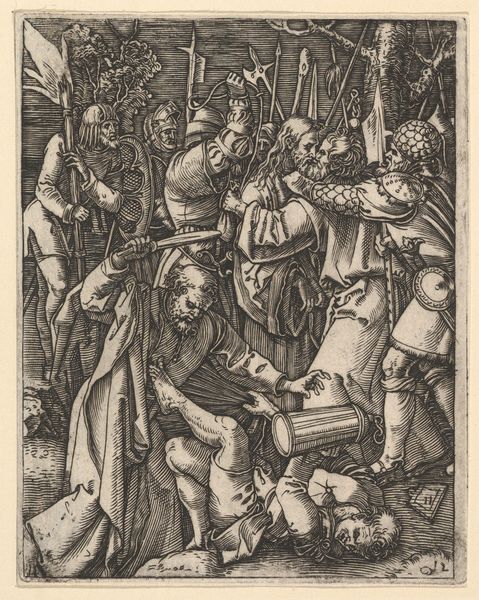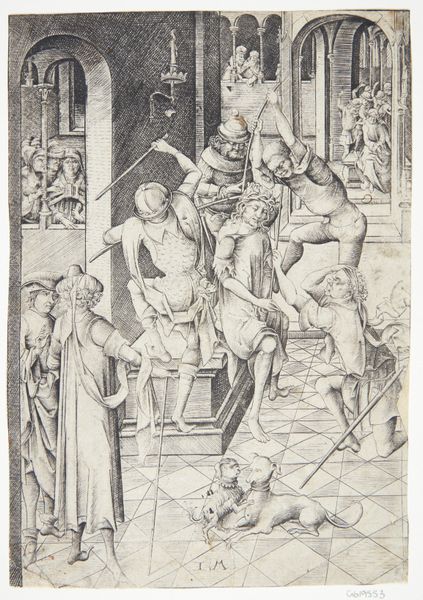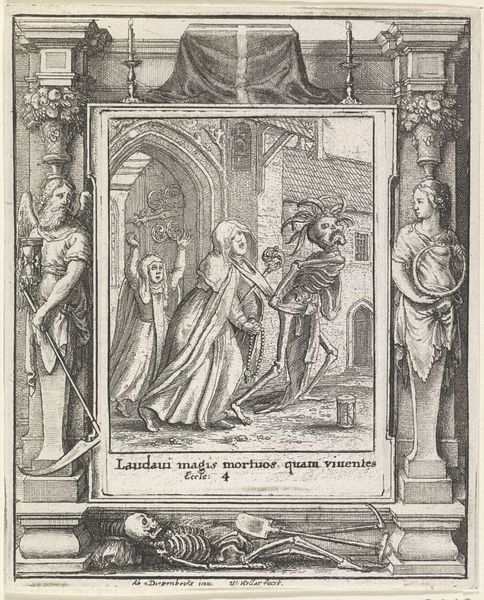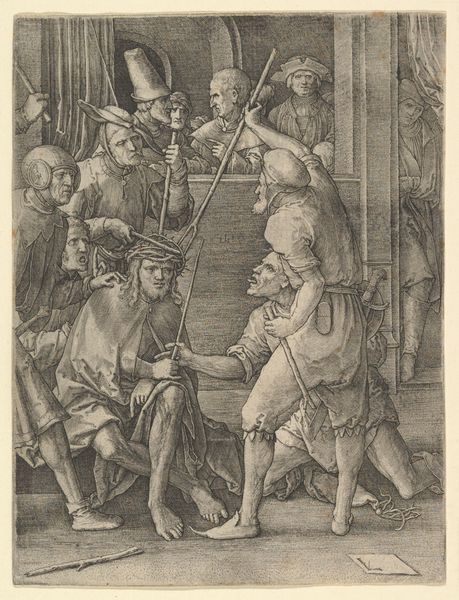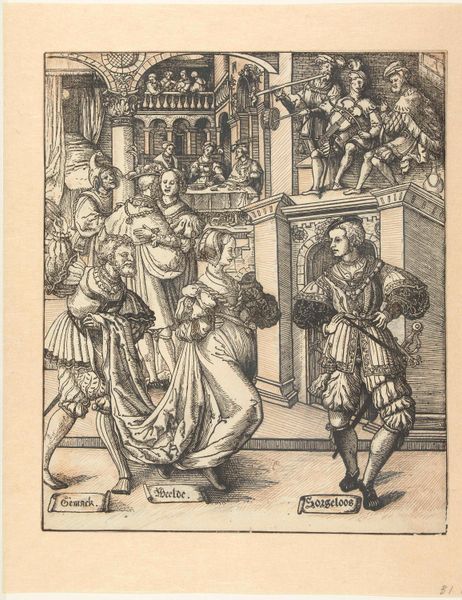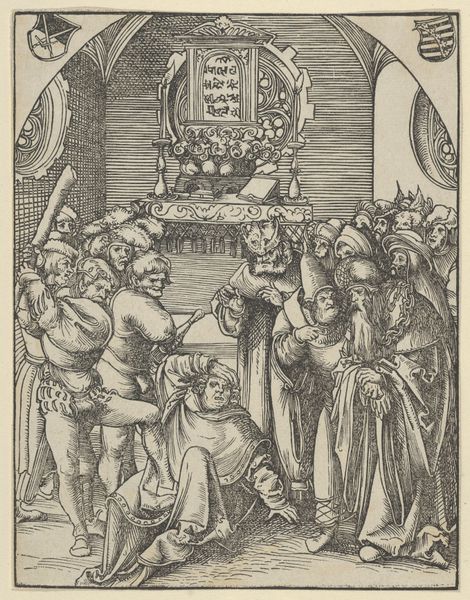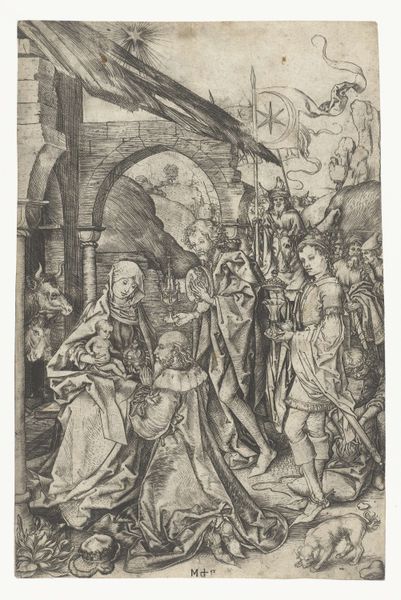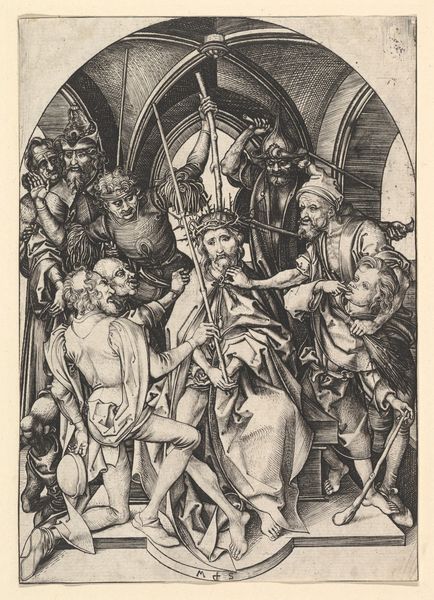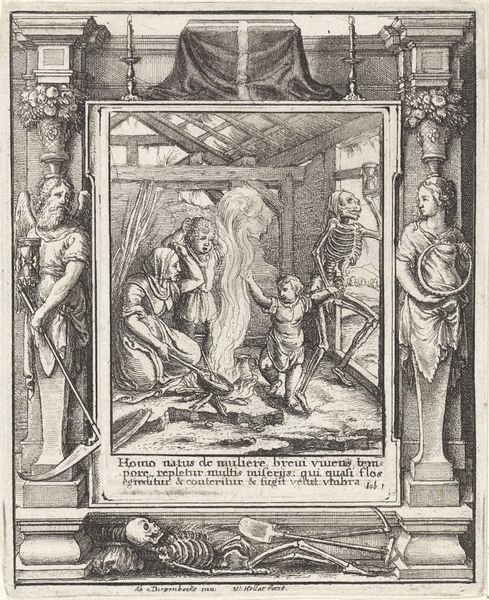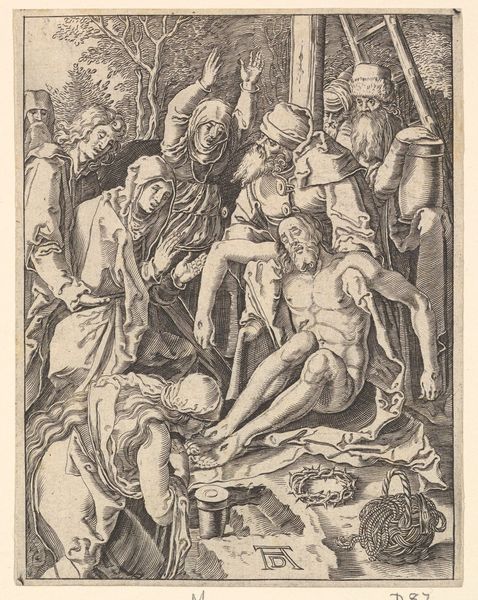
drawing, print, paper, engraving
#
drawing
#
medieval
#
pen drawing
# print
#
paper
#
northern-renaissance
#
engraving
Dimensions: 266 × 189 mm
Copyright: Public Domain
Editor: This engraving from the early 1500s, Israhel van Meckenem’s "The Suicide of Lucretia," is intense! There is a lot happening here; the drama seems so elevated. What stands out to you as you examine it? Curator: The entire composition pulsates with the weight of inherited stories. Look at Lucretia herself: the dagger becomes a scepter, doesn't it? She transforms from victim to tragic heroine, actively reclaiming her honor within a very constrained cultural narrative. The windows behind offer layered context--assault, the judgement that follows; each a kind of stage setting. Editor: That's a great point about the scepter. So you see the dagger not just as an instrument of death but also of power, in a way? Curator: Precisely. The image becomes a vessel for potent symbols, playing with ideas about gender, shame, and the performance of virtue in that time. Consider also, what does it tell us that this event is framed by, or leads to, public judgment? Editor: It feels like she is trapped, damned if she does and damned if she doesn’t…like it's the inevitable tragic outcome of her circumstances, laid out in those backdrops. Curator: And do you think the image condemns or condones her act? Is there anything in the visual rhetoric that suggests a reading? The posture of witnesses, for example? Editor: I hadn’t considered the audience reaction. The men seem…stern, and maybe confused, and the women are reaching out. Perhaps their gestures suggest pity or horror? Thank you – now the image has more layers for me to peel back. Curator: Indeed! This is what makes visual symbols so compelling – their enduring power to evoke multiple emotional and cultural associations across centuries.
Comments
No comments
Be the first to comment and join the conversation on the ultimate creative platform.
